Posted: October 6th, 2013 | Author: jimmurray | Filed under: environmental challenges, Green Initiatives, Green Jobs, Green News Links, Green Recycling, Green Services, Green Technology, Our Green Directory | Tags: environmental challenges, global, Placticbank.org, plastic recycling, plastic repurposing | No Comments »
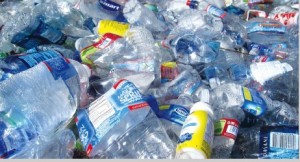 We were very pleased to discover this organization called the Plastic Bank.
We were very pleased to discover this organization called the Plastic Bank.
It’s predicated on the idea that waste plastic, which is one of the world’s most daunting environmental challenges, possesses what they believe to be an “abundance of opportunity”.
Their site, www.plasticbank.org, lays out the argument in very lucid terms and you come away feeling that you are looking at a very well meaning and more importantly, well structured organization.
 We don’t have to tell you just how much plastic wastes is created in the world every single day. But it’s easily in the millions of tons. It’s something that concerns everyone and should. But the vision of this group is to create plastic exchanges all over the world and be able to sort and funnel this waste plastic to wherever it can be most easily re-purposed.
We don’t have to tell you just how much plastic wastes is created in the world every single day. But it’s easily in the millions of tons. It’s something that concerns everyone and should. But the vision of this group is to create plastic exchanges all over the world and be able to sort and funnel this waste plastic to wherever it can be most easily re-purposed.
This is an admirable mission. And probably something that would be of great interest to a number of different types of recycling organizations.
The world is changing and it’s big ideas like this that helping that change be a change for the better.
Posted: September 8th, 2013 | Author: jimmurray | Filed under: BioFuels, Green Jobs, Green Technology | Tags: additives, Biofuel, gasoline, recycle, world | No Comments »
The argument for and against biofuels in the United States has raged back and forth for years. On the one hand, there are people who shout that one should never turn food (typically corn) into fuel. On the other hand are people shouting back that oil won’t go on forever, and they need to find a viable solution now before it’s too late. However, both sides of the argument in America are quickly being ignored. The reason for that is because biofuels have outgrown the argument, and are quickly becoming commercial industries all over the world rather than just in the first world.
The Country’s Needs
Because of advances in technology it’s become possible to create biofuels out of a wider variety of products than just corn. Fuel additives can be made from palm oil, ethanol can be strained from used vegetation, and it’s possible to make fuel from hemp as well as from algae. These are just a handful of the potential solutions. While it might have been Europe and America that took the first, pioneering steps into the idea of biofuels, the rest of the world has left them behind while searching for their own solutions.
The result of this search is that different countries have adapted different solutions based on what is plentiful in their areas. For instance, countries in South America are focusing solutions on the natural products that come out of the rain forest, while companies in Indonesia are looking to the solutions that abundant supplies of palm oil might yield. There is no reason to have a single type of biofuel for the entire world when there are different solutions readily available on so many different countries’ doorsteps just waiting to be utilized.
Sustainability Is Key
When it comes to biofuels and whether or not they’re commercially viable, the keyword is sustainability. This is the reason that the arguments can get so polarized in the United States; so many people view biofuels as either food or fuel. If biofuel was being made from algae, or from witch grass, there would be no argument because the places those plants grow are not the places that one can grow food. Or, take it a step further, if biofuels could be made from something that was generally considered a waste product, then they would be embraced as a way to reduce waste and to recycle even more. Provided that enough of it can be made to meet the demand.
The viability of a biofuel as a solution depends on how much of it a population needs. In parts of Europe where it is more common to take public transportation or to walk, where the need for any fuel will be lower, then a given solution might be quite viable. That same solution may not work in America, where there are huge spaces and where transportation is largely an individual responsibility. However, just because a solution won’t work in one country doesn’t mean another can’t use it.
This post is contributed by Linda Bailey from housekeeping.org. She is a Texas-based writer who loves to write on the topics of housekeeping, green living, home décor, and more. She welcomes your comments which can be sent to b.lindahousekeeping@gmail.com
Thanks, Linda.
If you would like to be a guest poster on Our Green Directory, send your proposed post, fully proofed, along with tags and any accompanying visuals in j-peg form to: jim.murray@ourgreendirectory.com. As long as it’s ‘green’ in nature and info or opinion that would be beneficial to people looking to evolve their personal lives or businesses through the use of eco-friendly products, services or advice, all posts are welcome. We do reserve the right to reject posts that do not fit these general parameters. Thanks, Jim

Posted: January 28th, 2012 | Author: jimmurray | Filed under: Green Communities, Green Home, Green Jobs | Tags: Buy Local, Green Movement, Jobs, Online Friends | No Comments »
While this isn’t what you would call strictly a green post, it is an issue about which we feel strongly. The Green Movement is a community, within that community are a lot of small businesses that are doing their best to act in an environmentally responsible way. We believe that is is the accumulation of a lot of those little things that are achieved by helping out local business that help us all be greener. Shopping locally means, in a lot of cases you are using your car less. It also means you are providing less support to the highly toxic Asian manufacturing world, where the WalMarts of the world get a great many of their products and foods. And you are supporting a strong retail environment in your own neighbourhood, which impacts directly on your own quality of life, among other things.
I found this little poster on Facebook the other day, and thought it might be nice to share with you, as a reminder of the benefits of shopping locally. Please feel free to share it with your on line friends.
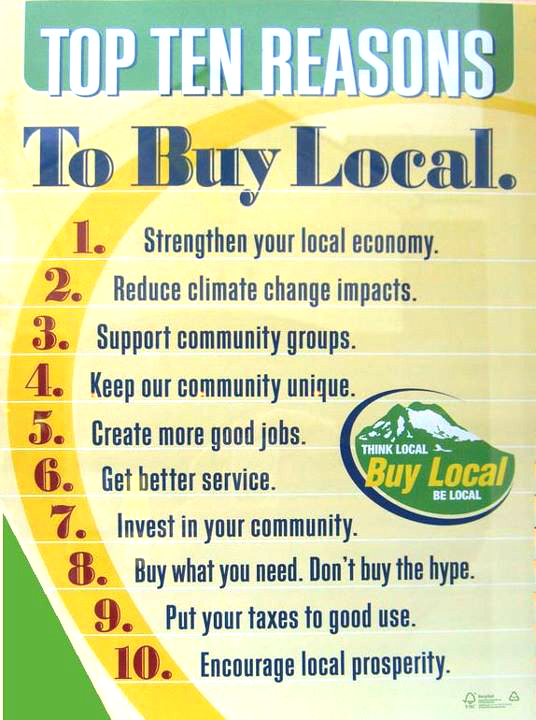
Posted: April 9th, 2011 | Author: jimmurray | Filed under: Green Initiatives, Green Jobs, Green Products, Green Technology, Our Green Directory | No Comments »
Peel Scrap Metal Recycling is one of the friends of Our Green Directory, and a client of ours as well. They have a very good blog on their site (see link below), and know a lot about the recycling of both ferrous and non-ferrous metal. But they also are keenly aware of the importance of recycling as a ‘green’ function.
This is one of of their recent blog posts about an innovation that, if it turns into a reality could have a major impact on the solar energy field.
Solar Roadways — The Biggest Green Idea Yet.
by Jeff Shaffer, Peel Scrap Metal Recycling
One of the more interesting aspects of being part of the green revolution is that you are exposed to new ideas and recycling technologies on a constant basis. Recently we came across something which really caught our attention.
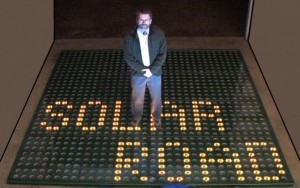 The Solar Roadways Project
The Solar Roadways Project
Scott Brusaw of Sagle Idaho is an electrical engineer whose company, Solar Roadways, wants to build solar panels that will replace the asphalt that constitutes most roadways, driveways, parking lots and even the paved areas we play on in playgrounds.
On only four hours sunlight per day, Mr. Brusaw estimates that 428 homes could go off the grid for every mile of four lane solar roadway.
This idea is as simple as they come. But like all truly revolutionary ideas, it is pure genius.
Mr. Bursaw’s vision: “Our long range goal is to cover all concrete and asphalt surfaces that are exposed to the sun with Solar Road Panels. This will lead to the end of our dependency on fossil fuels of any kind.”
With LEDs, load cells and other electronics embedded in the panels, the possibilities are endless. Safer nighttime driving will be possible as the highways are illuminated. The roadways can be programmed for traffic management with warnings for drivers and pedestrians. Heating elements can be built in to prevent snow and ice build-up. These roadways can also be constructed with self-healing power grids, a practical system for electric cars and so on.
The Recycling Industry Plays a Big Part
Implementation of the Solar Roadways system will create one of the largest green industries of all time. It will also dramatically affect the recycling industry as the Solar Roadway system is designed to incorporate recycled materials for its internal support structure.
All of this on roadways that will pay for themselves over time, replace our reliance on oil and coal, help deal with the problem of global warming in a substantial way and provide health and economic benefits to boot. It’s a win win situation.
More Than Just A Pipe Dream
As the green revolution continues to grow, we see a lot of very good ideas come and go. But the SolarRoadways project seems to have some real traction. And why not. There is really no downside to it and for the most part, the technology is already available.
A prototype of the Solar Roadway has been developed with a grant from the US Department of Transportation. While there are clearly aspects of this that need critical evaluation, we think it is a truly awesome idea.
More information on the Solar Roadway project can be found at:
http://www.solarroadways.com
http://dissociatedpress.com/2010/09/what-if-americas-highways-were-one-big-solar-panel
Or you can watch the video on YouTube
http://www.youtube.com/watch?v=Ep4L18zOEYI&feature=player_embedded
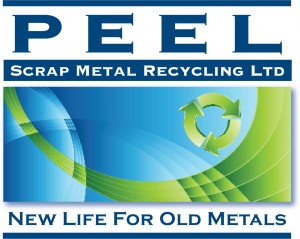 http://www.peelscrapmetalrecycling.com
http://www.peelscrapmetalrecycling.com
http://www.scrapwire.ca
Posted: November 15th, 2010 | Author: jimmurray | Filed under: Green Communities, Green Home, Green Initiatives, Green Jobs, Green News Links, Green Products, Green Technology | No Comments »
Building Green.com is one of the best web sites I have come across on the subject of Leeds building.
Leeds building has quietly crept into the psyche of builders and developers all over the world. And just recently a study was done demonstrating just how worthwhile the Leeds Building investment can be.
This is the lead paragraph from a very interesting article on Leeds building that Building Green.com buildinggreen.com has one their blog site. If you’re interested in Leed standards or even just mildly curious. this is a good site to bookmark and visit.
“Dutch economist Nils Kok has published the most comprehensive statistical analysis to date on the relative value of green and conventional buildings. The results show that U.S. buildings labeled under the LEED or Energy Star programs charge 3% higher rent, have greater occupancy rates, and sell for 13% more than comparable properties. “Labeled buildings have effective rents [rent multiplied by occupancy rate] that are almost 8% higher than those of otherwise identical nearby non-rated buildings,” the study reports…”
http://bit.ly/cf0i3o

Posted: November 5th, 2010 | Author: jimmurray | Filed under: Green Associations, Green Initiatives, Green Jobs, Green News Links | No Comments »
The Gulf Oil spill is pretty much yesterday’s news now. Unfortunately the devastating effects of this ludicrous corporate blunder (BP, in case you forgot), will be with us for some time to come, as the people of the Gulf region try to put their lives back together.
I understand that there is a fund set up to compensate these people for the hardship that they are enduring. And that always seems to get a lot of play. BP runs corporate messages telling everybody who cares to listen that they will be there till every last drop of oil is cleaned and that’s all well and good too.
But the simple fact remains that the entire Gulf Region including the Mississippi Delta has been almost completely destroyed, along with the livlihoods off a great many of the people who live there.
The article linked here will help shed a great deal of light on what’s really needed in the Gulf region right now.
The first three paragraphs, are a little disturbing in that they very succinctly point out the abject ignorance of the certain members of the American financial establishment regarding some pretty basic environmental economics. But the rest of this article The Nature Conservancy’s blog, Cool Green Science, makes a hell of a lot of sense.
http://blog.nature.org/2010/11/gulf-mexico-conservation-economics-jobs/

Posted: April 10th, 2010 | Author: jimmurray | Filed under: Green Communities, Green Jobs, Green Products | No Comments »
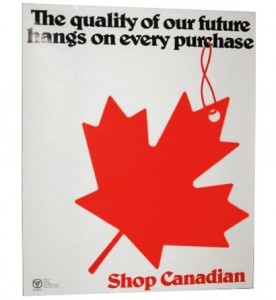 This is a little off topic, but I thought it was an important issue to keep in mind, because many of the ‘green’ products we promote on Our Green Directory, are made locally.
This is a little off topic, but I thought it was an important issue to keep in mind, because many of the ‘green’ products we promote on Our Green Directory, are made locally.
This is an email that my wife received from a friend of hers.
PS: The image you see to your right is an ad I did back in the 1970s. I found it when searching for a ‘Buy Canadian’ graphic to accompany this posting. For a few seconds there, I felt kinda famous. But the feeling passed.
Buy Canadian
A physics teacher in high school, once told the students that while one grasshopper on the railroad tracks wouldn’t slow a train very much, a billion of them would. With that thought in mind, read the following, obviously written by a good Canadian.
Good idea. One light bulb at a time …
Check this out . I can verify this because I was in Lowe’s the other day for some reason and just for the fun of it I was looking at the hose attachments . They were all made in China. The next day I was in Home Hardware and just for the fun of it I checked the hose attachments there. They were made in Canada! Start looking.
In our current economic situation, every little thing we buy or do affects someone else – even their job. So, after reading this e-mail, I think this lady is on the right track. Let’s get behind her!
She said: My grandson likes Hershey’s candy . I noticed, though, that it is marked made in Mexico now. I do not buy it any more . My favorite toothpaste, Colgate, is made in Mexico now. I have switched to Crest. You have to read the labels on everything .
This past weekend I was at Wal-Mart. I needed 60W light bulbs . I was in the light bulb aisle, and right next to the GE brand I normally buy was an off-brand labeled, “Everyday Value. ” I picked up both types of bulbs and compared the stats – they were the same except for the price. The GE bulbs were more money than the Everyday Value brand but the thing that surprised me the most was the fact that GE was made in MEXICO and the Everyday Value brand was made in – get ready for this -in Canada in a company in Ontario. Their Equate products are also made in Canada, and are very good.
So throw out the myth that you can not find products you use every day that are made right here.
My challenge to you is to start reading the labels when you shop for everyday things and see what you can find that is made in Canada. The job you save may be your own or your neighbours! (Your children & grandchildren also)
If you accept this challenge, pass it on to others in your address book so we can all start buying Canadian, one light bulb at a time! Stop buying from overseas companies!
(We should have awakened a decade ago.)
Let’s get with the program. Help our fellow Canadians keep their jobs and create more jobs here in Canada.
If President Obama insists on a “Made in America ” policy, which is commendable of him, to support American workers, we should do likewise. BUY CANADIAN! Read the labels. Support Canadian jobs.
Posted: December 18th, 2009 | Author: jimmurray | Filed under: Green Communities, Green Jobs, Our Green Directory | No Comments »
http://green101.experience.com
Green 101 is excellent green blog for city dwellers with lots of info on going green both on and off campus.
If you have a green link you would like to have posted on our blog, just send it along, with a short description and we’ll post it for you. Email: jim.murray@ourgreendirectory.com.
Posted: October 27th, 2009 | Author: jimmurray | Filed under: Green Jobs | No Comments »
Inside a building on West 84th St. and Columbus Ave. in Manhattan’s Upper West Side, high school students are getting a head start on the careers of the future.
Launched in September, the Urban Assembly School for Green Careers is believed to be the first of its kind in North America. Its objective is to prepare students for either a post-secondary program related to environmental studies or a job in the burgeoning eco-industry.
The school is a partnership between the New York City Department of Education and the Urban Assembly, a non-profit group that helps run 22 schools in the city for students in under-resourced areas.
The green school is open to students from anywhere in the city. Find out More…
 We were very pleased to discover this organization called the Plastic Bank.
We were very pleased to discover this organization called the Plastic Bank.  We don’t have to tell you just how much plastic wastes is created in the world every single day. But it’s easily in the millions of tons. It’s something that concerns everyone and should. But the vision of this group is to create plastic exchanges all over the world and be able to sort and funnel this waste plastic to wherever it can be most easily re-purposed.
We don’t have to tell you just how much plastic wastes is created in the world every single day. But it’s easily in the millions of tons. It’s something that concerns everyone and should. But the vision of this group is to create plastic exchanges all over the world and be able to sort and funnel this waste plastic to wherever it can be most easily re-purposed.






